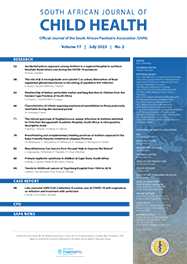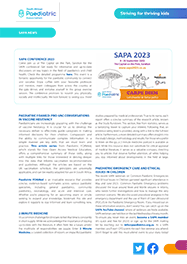Review

Children with oculocutaneous albinism in Africa: Characteristics, challenges and medical care
Abstract
Oculocutaneous albinism (OCA) is an inherited condition characterised by significantly reduced pigment in skin, hair and eyes, visual defects and an increased risk of skin cancer. In the South African black population, 1 in 4 000 people is affected. Quality of life in children with albinism is influenced not only by health problems, but also by stigmatisation, rejection and cultural issues. This review aims to explore the latest literature available on the epidemiology, genetics, clinical characteristics, psychosocial issues and possible management strategies, focusing on affected children. The knowledge provided here is required of health professionals if a more fully informed service is to be offered to these children and their families.
Authors' affiliations
J R Kromberg, Division of Human Genetics, School of Pathology, Faculty of Health Sciences, University of the Witwatersrand and National Health Laboratory Service, Johannesburg, South Africa
P Manga, Division of Human Genetics, School of Pathology, Faculty of Health Sciences, University of the Witwatersrand and National Health Laboratory Service, Johannesburg, South Africa Ronald O Perelman Department of Dermatology, New York University School of Medicine, New York, USA
R Kerr, Ronald O Perelman Department of Dermatology, New York University School of Medicine, New York, USA
Full Text
Cite this article
Article History
Date published: 2020-04-23
Article Views
Full text views: 1041

.jpg)



Comments on this article
*Read our policy for posting comments here